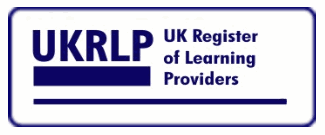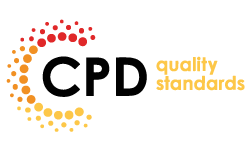
Imagine a world where words take a backseat and pictures become the storytellers. Picture this: Colors dance on paper, bringing imagination to life. Illustration is the art of creating visual representations to enhance or explain a concept, idea, or story. It involves using various techniques to convey messages through images. Whether it’s in books, advertisements, or digital media, illustrations play a pivotal role in communication and expression. Want to know how to become an illustrator? Let’s learn together.
Table of Contents
What is the Difference Between an Illustrator and a Graphic Designer?
When considering a career path in the creative industry, it’s essential to understand the distinctions between an illustrator and a graphic designer. While both roles involve visual communication, they differ in their focus and the tasks they perform. Here are some key differences:
Purpose
Illustrators primarily create visual representations of concepts, ideas, or stories. They use their artistic skills to convey a specific message or evoke certain emotions through their illustrations. On the other hand, graphic designers focus more on solving problems through visual communication. They design layouts, logos, and other visual elements to communicate a brand’s message or to present information effectively.
Tools and Techniques
Illustrators often work with traditional mediums like pen and paper, as well as digital tools such as tablets and illustration software. They utilise various techniques such as drawing, painting, or digital rendering to create their illustrations. In contrast, graphic designers rely heavily on computer software like Adobe Photoshop, Illustrator, or InDesign to create designs. They use typography, colour theory, and layout principles to craft visually appealing and functional designs.
Scope of Work
Illustrators typically work on projects that require custom artwork, such as book illustrations, editorial illustrations, or character design. They may collaborate with authors, publishers, or advertising agencies to bring visual concepts to life. Graphic designers, on the other hand, work on a broader range of projects, including branding, web design, print materials, and marketing collateral. They often work closely with clients or creative directors to meet specific design objectives and project requirements.
Focus on Style vs. Functionality
Illustrators often develop a distinctive style that sets their work apart and reflects their artistic vision. They may specialise in a particular genre or subject matter, such as children’s illustrations, fantasy art, or technical illustration. Graphic designers, meanwhile, prioritise functionality and usability in their designs. They adapt their style to suit the needs and preferences of their clients, focusing on clear communication and effective visual solutions.
In conclusion, while both illustrators and graphic designers contribute to visual communication, they approach their work in different ways. Illustrators focus on creating original artwork to convey ideas or narratives, while graphic designers use design principles to solve problems and communicate messages effectively. Understanding the distinctions between these two roles can help aspiring creatives determine which path aligns best with their skills and interests. Learn more about how to become an illustrator.
How to Become an Illustrator
Becoming an illustrator can be an exciting journey for those passionate about visual storytelling. Here’s a step-by-step guide to help you how to become an illustrator:
Develop Your Skills
Start by honing your drawing skills. Practice regularly to improve your technique and develop your own unique style. Experiment with different mediums such as pencils, pens, or digital tools.
Learn the Basics
Familiarise yourself with the fundamentals of illustration, including composition, perspective, and colour theory. Understanding these concepts will lay a strong foundation for your future work.
Gain Knowledge
Study the work of established illustrators to learn from their techniques and approaches. Take inspiration from a variety of sources, including books, online tutorials, and art exhibitions. Join Studyhub courses like – Learning Drawing and Illustration Complete Training, Digital Painting Course, and Animation Designer (Drawings, Timing, Overlapping, Coloring) Complete Course
Get Educated
Consider pursuing formal education in illustration or a related field. Many colleges and universities offer degree programs or courses in illustration that can provide valuable training and guidance. Seeking mentorship from experienced illustrators can offer guidance on how to become an illustrator.
Build Your Portfolio
Create a portfolio showcasing your best work. Include a variety of pieces that demonstrate your skills and versatility as an illustrator. Your portfolio is your calling card and will be essential for attracting clients or applying for jobs.
Seek Feedback
Don’t be afraid to seek feedback from peers, mentors, or online communities. Constructive criticism can help you identify areas for improvement and refine your work further.
Network
Connect with other illustrators, industry professionals, and potential clients through social media, networking events, or online forums. Networking with other professionals in the industry can provide valuable insights into how to become an illustrator.
Gain Experience
Look for freelance or intern opportunities to gain practical experience and build your reputation as an illustrator. Working on real projects will not only sharpen your skills but also help you establish yourself in the industry.
Promote Yourself
Create a professional online presence by showcasing your work on a website or social media platforms. Use platforms like Instagram, Behance, or Dribbble to share your portfolio and attract potential clients.
Stay Persistent
Success in illustration takes time and dedication. Stay motivated, keep pushing yourself to improve, and don’t be discouraged by setbacks. With persistence and hard work, you can achieve your goal of becoming a successful illustrator.
Wondering how to become an illustrator? Becoming an illustrator takes practice and learning. Improve skills, study basics, and get educated. Make a diverse portfolio, seek feedback, and network. Gain experience, promote yourself online, and stay persistent. With dedication, you can achieve your dream of being an illustrator.
Responsibilities of an Illustrator
Being an illustrator is a journey filled with creativity and expression. Illustrators play a crucial role in bringing ideas, stories, and concepts to life through visual storytelling. Here are some key responsibilities of an illustrator:
Understanding the Brief
Initially, you’ll need to grasp the client’s requirements and expectations. This involves careful reading and interpretation of the project brief.
Researching
Before putting pen to paper, it’s crucial to conduct research. This could involve studying the subject matter, exploring different visual styles, or examining similar projects for inspiration.
Sketching and Brainstorming
Once you have a good understanding of the brief and have gathered relevant information, it’s time to start sketching ideas. Brainstorming allows you to explore various concepts and compositions.
Feedback Incorporation
Feedback is essential for refining your work. You must be open to constructive criticism and willing to make changes based on client or art director feedback.
Choosing the Right Tools
As an illustrator, you’ll need to select the appropriate tools for each project. This might include traditional mediums like pencils and paints, or digital software such as Adobe Illustrator or Procreate.
Creating Illustrations
This is where your creativity shines. Using your chosen tools, bring your sketches to life, paying close attention to detail, composition, and overall aesthetics.
Meeting Deadlines
Time management is crucial in the world of illustration. You’ll often be working within tight deadlines, so it’s essential to manage your time effectively to deliver high-quality work on schedule.
Communicating Effectively
Good communication skills are vital for any illustrator. You’ll need to maintain clear and open communication with clients, art directors, and other stakeholders throughout the project.
Building a Portfolio
Continuously update and improve your portfolio with your latest work. A strong portfolio showcases your skills and helps you attract new clients and opportunities.
Self-Promotion
In today’s competitive market, self-promotion is key. Utilise social media, online platforms, and networking events to showcase your work and connect with potential clients.
In summary, being an illustrator involves more than just drawing pictures. Exploring various drawing techniques is a fundamental step in learning how to become an illustrator. It requires a combination of creativity, technical skills, effective communication, and business acumen. By mastering these responsibilities, you can build a successful career in illustration.
Where to Find Jobs as an Illustrator?
Are you passionate about drawing and creating visual art? Becoming an illustrator might be the perfect career path for you. However, finding a job as an illustrator can sometimes be challenging. Here are some tips to help you land your dream job:
Online Job Boards
Many websites specialise in posting creative job listings. Platforms like Behance, Dribble, and Creativepool often feature job postings for illustrators. Regularly check these websites for new opportunities.
Social Media
Utilise social media platforms like LinkedIn, Twitter, and Instagram to showcase your artwork. Follow companies or individuals in the creative industry and engage with their content. Sometimes, job openings are shared exclusively on social media.
Networking Events
Attend industry-related events, such as art exhibitions, workshops, or conferences. These events provide excellent opportunities to meet potential clients or employers face-to-face and showcase your portfolio.
Freelance Websites
Join freelance websites like Upwork, Freelancer, or Fiverr to find freelance illustration projects. Create a compelling profile showcasing your skills and past work. Be proactive in applying for relevant job postings.
Illustrator Communities
Join online communities or forums dedicated to illustrators. Websites like ConceptArt.org or Reddit’s r/Illustration are great places to connect with other artists, share tips, and learn about job opportunities.
Portfolio Websites
Create a professional portfolio website showcasing your best work. Make sure to include a variety of styles and mediums to demonstrate your versatility as an illustrator. Optimise your website for search engines to increase visibility.
Cold Pitching
Identify companies or publications that may require illustration services and reach out to them directly. Craft a personalised email introducing yourself, highlighting your skills, and expressing your interest in collaborating with them.
Job Agencies
Some recruitment agencies specialise in creative industries and may have job listings for illustrators. Submit your portfolio to these agencies, and they will notify you of any relevant job openings that match your skills and experience.
Industry Publications
Keep an eye on industry-related publications or websites that often feature job listings for illustrators. Examples include Communication Arts, Creative Review, or The Association of Illustrators’ website.
Local Opportunities
Don’t overlook local opportunities such as small businesses, non-profit organisations, or educational institutions in your area. They may require illustration services for various projects, such as branding, marketing materials, or educational resources.
In conclusion, finding jobs as an illustrator requires a combination of online research, networking, and proactive outreach. By utilising various resources and platforms, you can increase your chances of landing exciting illustration opportunities. Stay persistent and continue to hone your craft, and you’ll be on your way to a successful career as an illustrator.
Career Growth and Salary of an Illustrator
In the United Kingdom, the career trajectory and earnings potential for illustrators can be promising. Illustrators often begin by showcasing their creative talents through a diverse portfolio of work, ranging from digital art to traditional media. As they gain experience and recognition, opportunities for career advancement arise, including collaborations with renowned clients and projects across various industries such as publishing, advertising, and multimedia. While entry-level illustrators may start with modest salaries, those with established reputations and impressive portfolios can command higher rates for their services. Freelancing offers flexibility and the possibility of higher earnings, while in-house positions at design agencies or publishing houses provide stability and potential for career growth within a structured environment. Additionally, ongoing professional development and networking are essential for staying competitive and seizing new opportunities in the dynamic field of illustration in the UK.
FAQs
Becoming an illustrator can vary greatly depending on individual talent, dedication, and learning pace, but it typically takes several years of practice and study to develop the necessary skills.
In the UK, you don’t necessarily need a degree to become an illustrator. While a degree in illustration or a related field can be beneficial for networking and skill development, it’s not always required.
Essential tools for illustrators include drawing tablets, digital illustration software like Adobe Photoshop or Illustrator, traditional art supplies such as pencils, pens, and paper, and a strong understanding of composition, colour theory, and storytelling techniques.
- All Courses
- IT & Software367
- Management269
- Teaching and Education247
- Business230
- Health and Fitness202
- Health & Safety156
- Engineering & Technology149
- Quality Licence Scheme135
- Health and Social Care131
- Healthcare127
- Accounting & Finance117
- Employability103
- Psychology98
- Lifestyle93
- Marketing74
- Office Productivity65
- Animal Care56
- Design and Photography52
- Design44
- Beauty & Makeup42
- Accounting & Bookkeeping32
- Web Development25
- Writing20
- Construction14
- Digital Marketing12
- Environment9
- Child Care8
- Agriculture5
- Coaching1
Awarded By





0 responses on "How to Become an Illustrator: Sketching Your Path to Success"